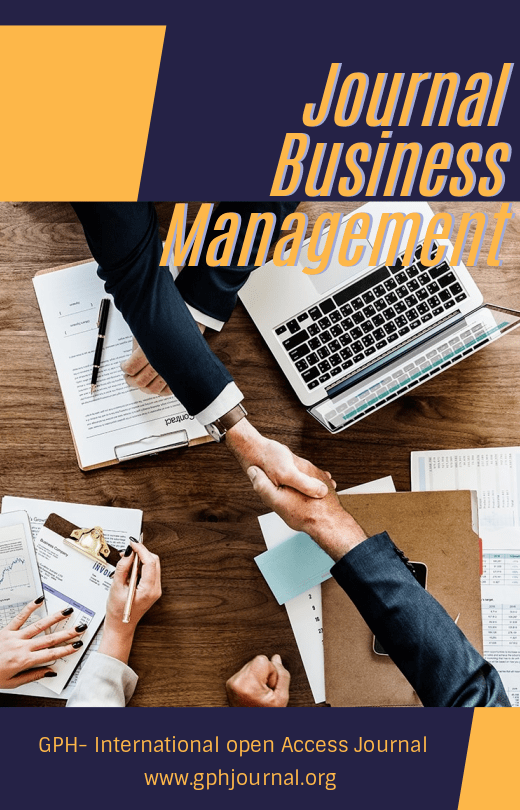STRUCTURAL DESIGN AND CORPORATE GOVERNANCE IN A POST PANDEMIC ENVIRONMENT
Abstract
The focus of this research was on the relationship between structural design and corporate governance in a post-pandemic environment. The research offered a conceptualization of the related concepts, specifically highlighting on the implications of corporate governance and the pandemic on the behaviour and well-being of organizations. Types of structural designs such as the functional, divisional and geographical structural designs were examined. Based on the review of literature, it was noted that the restructuring and modification of structural designs is necessary in light of the emerging new realities and crisis occasioned by the pandemic. Such restructures enable improved role performance and the efficiency of organizational systems – thus promoting outcomes of enhanced organizational effectiveness, competitiveness and productivity. Hence in conclusion, it was affirmed that designs such as reflected in the functional, divisional and geographical structural designs should be advanced the necessary considerations in line with the changes in the environment of the organization for improved outcomes of corporate governance.
Downloads
References
Al-Faki, M. (2006). Transparency and Corporate Governance for capital market development in Nigeria: The Nigerian case study. Securities Market Journal, 2006 ed., 9-28
Almazan, A., Hartzell, J. C., & Starks, L. T. (2005). Active Institutional Shareholders and Costs of Monitoring: Evidence from Executive Compensation. Financial Management, 34(4), 5-34.
Andres, P. d., &Vallelado, E. (2008). Corporate Governance in Banking: The Role of the Board of Directors. Journal of Banking & Finance, 32(12), 2570-2580.
Arosa, B., Iturralde, T., &Maseda, A. (2010). Ownership Structure and Firm Performance in Non-Listed Firms: Evidence from Spain. Journal of Family Business Strategy, 1(2), 88-96.
Bauer, R., Guenster, N., & Otten, R. (2004). Empirical Evidence on Corporate Governance in Europe: The Effect on Stock Returns, Firm Value and Performance. Journal of Asset Management, 5(2), 91-104.
Blanchard, K. (2008). Situational Leadership: Adapt your style to their development level. Leadership Excellence, 25 (5), 19-19.
Bloisi, W., Cook, C.W., & Hunsaker, P.L. (2007). Management & organizational Behaviour. 2nd edition. Maidenhead: McGraw-Hill
Bryman, A., & Bell, E. (2011). Business Research Methods. 3rd edition. Oxford: Oxford University Press.
Colley, R.R. (2005). What is Corporate Governance. New York: McGraw-Hill
Coyle, B. (2006). Professional Development Corporate Governance. London: ICSA
Crawford, J. (2007). The Reform of Corporate Governance: Major Trends in the U.S. Corporate Boardroom: Capella University.
Farar J. (2005). Corporate Governance: Theories, Principles and Practice. In Okene et al (ed.)
https://www.vanguardngr.com/2022/02/banks-in-2022-still-attractive-but-the-pressure-is-mounting-analysts/
Kupritz, V.W., & Cowell, E. (2011). Productive Management Communication: Online and Face-to-Face. Journal of Business Communication, 48 (1), 54-82
Leavitt, H.J. (2003). Why Hierarchies Thrive. Harvard Business Review, 81 (3), 96-102.
Lund, S., Madgavkar, A., Manyika, J., Smit, S., Ellingrut, K., Robinson, O. (2021). The future of work after Covid-19. Retrieved from https://www.mckinsey.com/featured-insights/future-ofwork/the-future-of-work-after-covid-19
Magdi, R. and NadarehR.(2002). Corporate Governance: A framework for implementation. Britain World Group Journal, 20, 123-132.
McKinsey, C (2021). Building workforce skills at scale to thrive during - and after - the Covid-19 crisis. Retrieved from https://www.mckinsey.com/businessfunctions/organization/our-insights/building-workforce-skills-at-scale-to-thrive-during-and-afterthe-covid-19-crisis
Mensah S. (2003). Corporate Governance in Africa. The Role of Capital Market Regualtion. Nairobi 2nd Pan African Consultation Forum on Corporate Governance.
Mintzberg, H. (2009). Managing. San Francisco: Berrett-Koehler Publishers, Inc.
Northouse, P.G. (2013). Leadership: Theory and Practice. 6th edition. Thousand Oaks: SAGE Publications, Inc.
Reichertz, J. (2010). Abduction: The Logic of Discovery of Grounded Theory. Forum Qualitative Sozialforschung / Forum: Qualitative Social Research, 11(1), 1-16.
Ruler, B. (2018). Communication Theory: An Underrated Pillar on Which Strategic Communication Rests, International Journal of Strategic Communication, 12:4, 367-381
Saunders, M., Lewis, P. & Thornhill, R. (2003). Research Methods for Business Students. New York: Prentice Hall.
Senior, B., &Swailes, S. (2010). Organizational Change. 4 th edition. Harlow: Prentice Hall.
Smet, D. A., Daniel, P., Relyea, C., Sternfels, B. (2020). Ready, set, go: Reinventing the organization for speed in the post-Covid-19 era. Retrieved from https://www.mckinsey.com/business-functions/organization/our-insights/ready-set-goreinventing-the-organization-for-speed-in-the-post-covid-19-er
Tiller, S. (2012). Organizational Structure and Management Systems. Retrieved from https://ascelibrary.org/doi/full/10.1061/(ASCE)LM.1943-5630.0000160
Uche, C. (2004). Corporate Governannce in Nigerian Financial Industry. Chartered Institute of Bankers of Nigeria Journal, 2, 11-23
Wang, D., Waldman, D.A., & Zhang, Z. (2013). A Meta-Analysis of Shared Leadership and Team Effectiveness. Journal of Applied Psychology, 99 (2), 181–198.
Copyright (c) 2023 Dr. Macaulay Enyindah Wegwu

This work is licensed under a Creative Commons Attribution-NonCommercial-NoDerivatives 4.0 International License.
The authors and co-authors warrant that the article is their original work, does not infringe any copyright, and has not been published elsewhere. By submitting the article to GPH-International Journal of Business Management, the authors agree that the journal has the right to retract or remove the article in case of proven ethical misconduct.




























